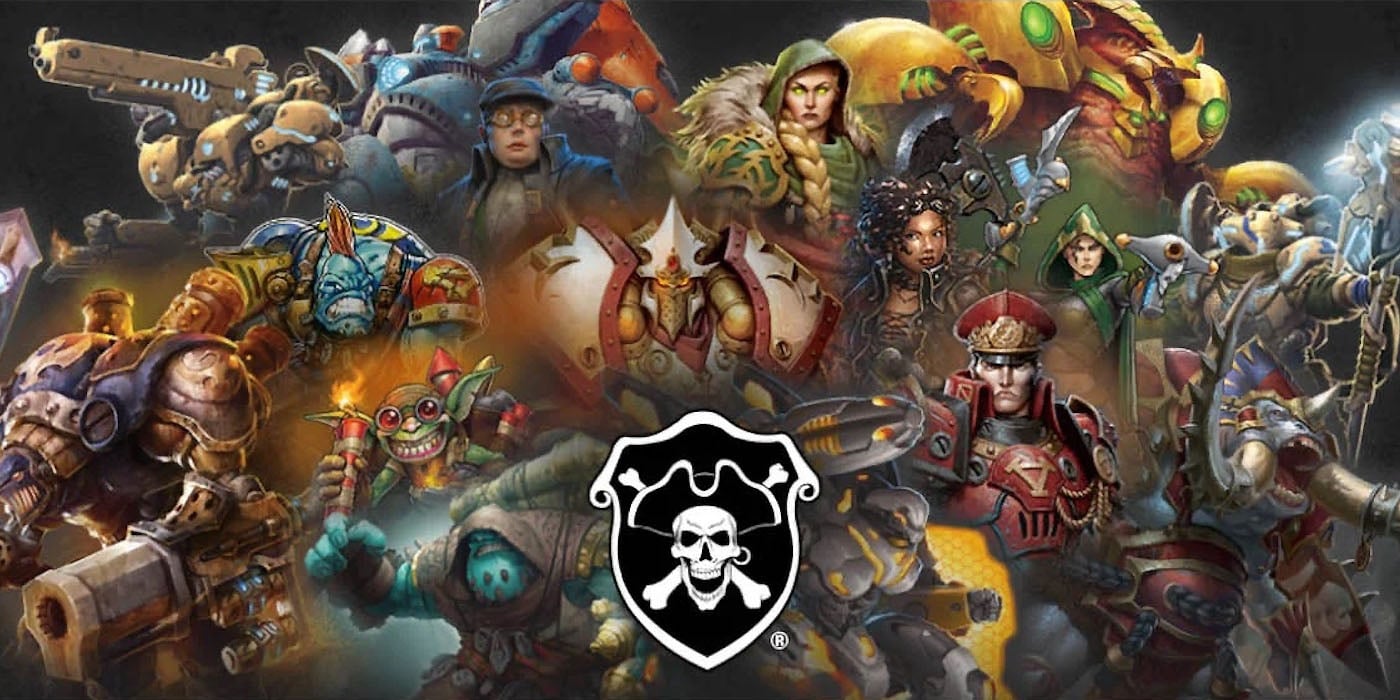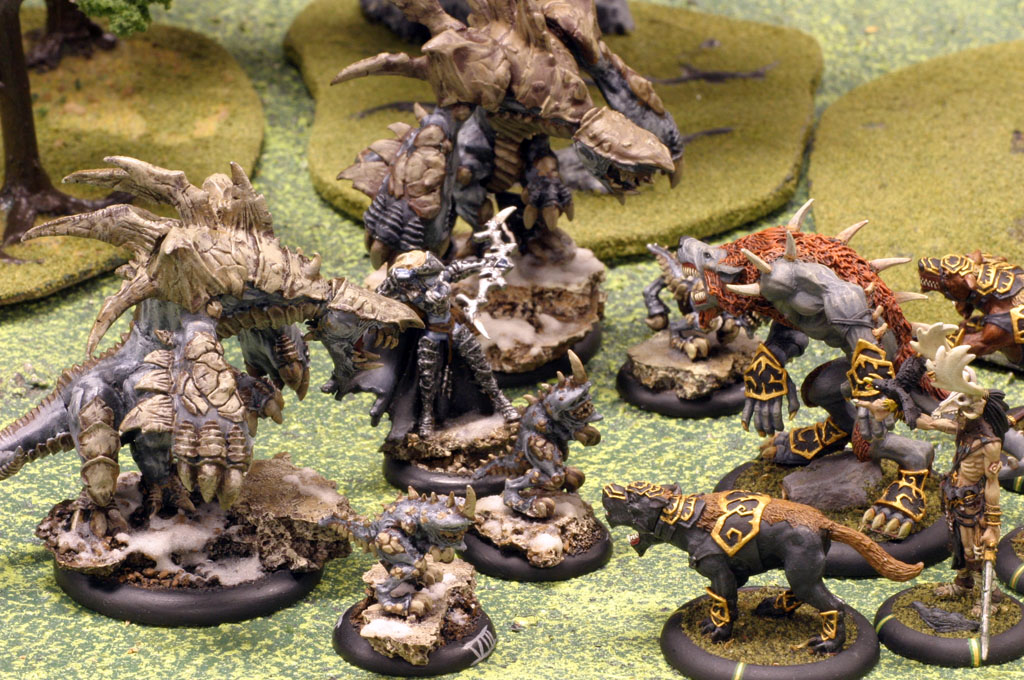List building- From Theory to Practice Part II

It’s been a few weeks and I’ve been playing with Relasine’s list… and I want to talk more about the mental process of refining your army lists.
This is part II of how to refine and hone your army lists. I’m using Warmachine as my example game, but this also applies to 40k, WHFB, and any other system you can imagine.
In case you don’t remember, I’ve been playing the list Relasine laid out in his first list building article.
Absylonia, Terror of Everblight (-5pts)
* Nephilim Protector (5pts)
* Shredder (2pts)
* Angelius (9pts)
* Carnivean (11pts)
Blighted Nyss Archers (Leader and 9 Grunts) (8pts)
* Blighted Nyss Archers Officer & Standard (2pts)
Gatormen Posse (Leader and 4 Grunts) (9pts)
Bog Trog Ambushers (Leader and 5 Grunts) (5pts)
Blighted Nyss Shepherd (1pts)
Totem Hunter (3pts)
– 50 Points
Just to recap my first article, the only change I made was swapping out the Gatormen Possee (since I don’t own any). Getting in 50pt games has been a little difficult due to the numerous new players and the general reluctance of some of the vets to play above 35pts. Still, I’ve gotten in several games now, particularly against Retribution and Trolls, and I’ve started making refinements to the list to suit my own playstyle. I’ll use this list as an example to discuss some list-refining techniques you can use while you play your games.
#1- Play scenarios
I ALWAYS play scenarios. The game just isn’t the same without them. Some units and casters lose a lot of their mojo if you’re only playing assassination games; Gorten and Man-o-War Shock Troopers being great examples. If you don’t regularly play scenarios, I highly suggest trying them out. Most of Privateer Press’ Steamroller tournament scenarios require both sides to win via assassination, or by controlling 1-3 points or areas of the table. You can download them for free here. Get used to playing them and figure out how your list will deal with lots of different opponents in all the different scenario types.
This list isn’t all that great at holding ground, but I still need to at least have the ability to deny my opponent a scenario win while I’m going after his caster or wiping out his army. Durable models, like heavy Warjacks or multi-wound infantry can do this well, but so can multi-wound solos. 2 or 3 point models like the Totem Hunter or Shredder are great at this because they’re fast, cheap (and therefore expendable at need), and have either high DEF, good ARM, many wounds, or a combination of those three. I can take those models and park them on the edge of a control zone, preferably in or behind terrain, and my opponent has to deal with them if he wants a scenario victory, while the other 47 or 48 points of my army are going for his jugular.
#2- Know your own weaknesses
For instance, I went into this process knowing that the list has a glaring weakness against stealthy and incorporeal models. The lack of an advanced deploying unit is also a bit… concerning…. since they are a good way to either contest control points early, and put rapid pressure on the enemy force. Against stealthed opponents I’m relying on eyeless sight on my Warbeasts, suppressing fire from the Archers, and the flanking Bog Trogs to kill them in melee before they become too much of a problem. Against incorporeal… well… only my Warlock can really kill them. Fortunately, Legion has some new units coming out later in the year that can help. One good way to find this out is to ask your regular opponents to field lots of different units against you.
#3- Keep track of what’s working, and what’s not
You’d think that suppressing fire from the Archers would be good against stealth (placing a 3″-5″ template that causes damage to any model entering it), but the template is small enough (even the 5″ one) and requires the archers to be close enough to the unit (completely with 12″ of all contributing models), that I’ve seen enemy units simply walk (or run) around it. Smarter opponents will even run into melee with the Archers, confident that my Archers’ own melee skills are weak enough to minimize any return casualties. Against very high DEF or ARM units, my opponents are correct, and it often takes me bringing in another unit (like Bog Trogs) to save my Archers from that situation. Because of that, I’m about ready to remove the Archers from the list and field something else instead. Why? Because one big reason for fielding the Archers is to take out opposing infantry and to kill stealthed opponents. If they can’t perform one of those two functions, then I’m better off finding something else that can. An 8pt Seraph, 5pt Teraph, or 10pt Ravagore can do both, and two of those options even come in at fewer points. Alternatively, I’ll be looking into the upcoming Hex Hunter unit that has magical attacks (to kill incorporeal), high speed (to ensure the charge), and can also be stealthed itself.
We’re running out of space, so keep an eye out shortly for the last part of this series, with even more tips to refine your lists!






